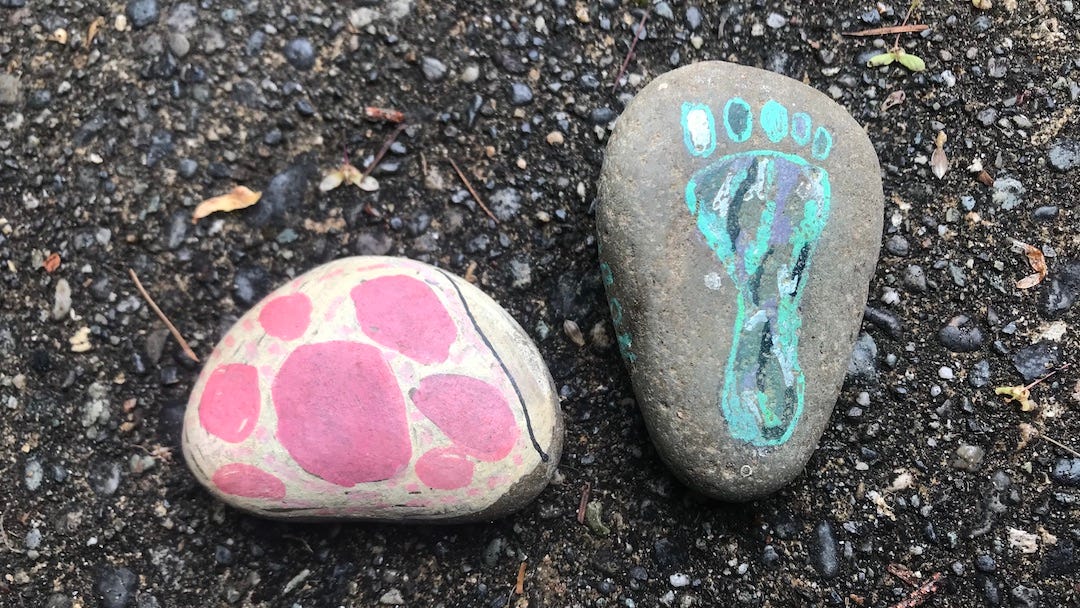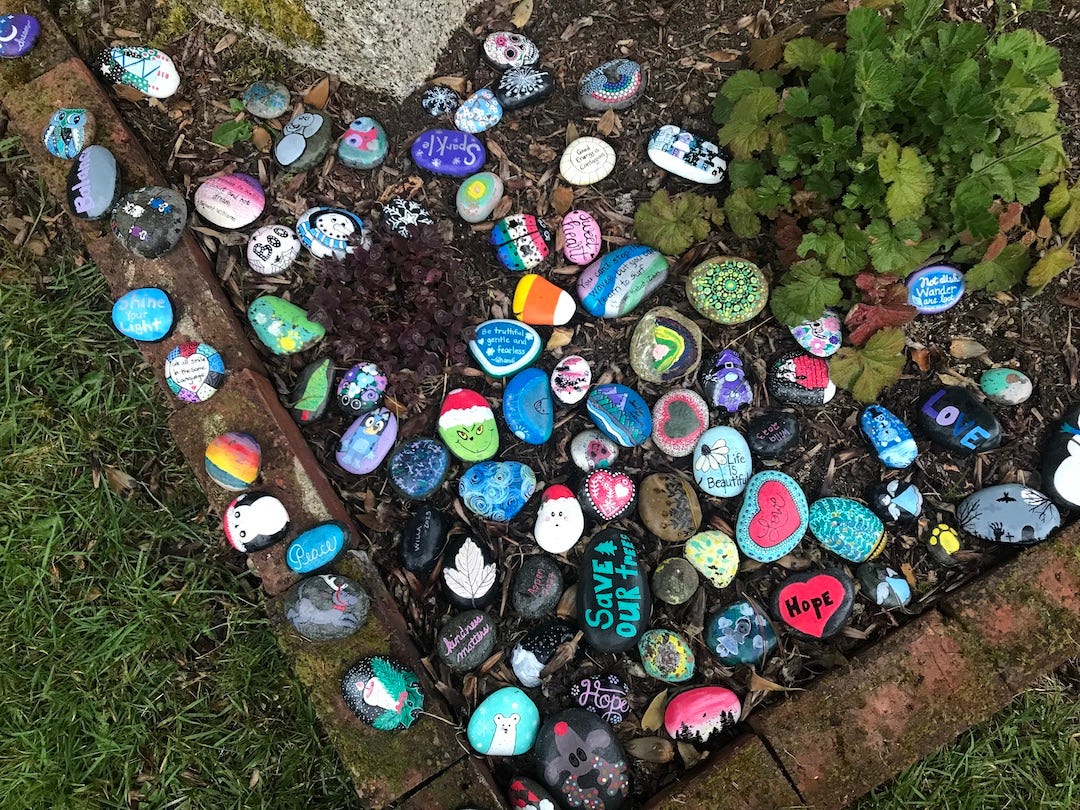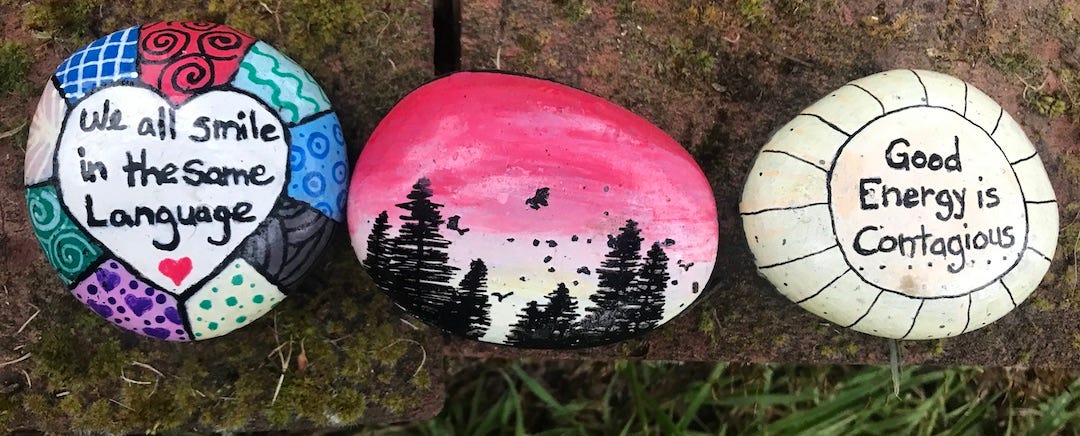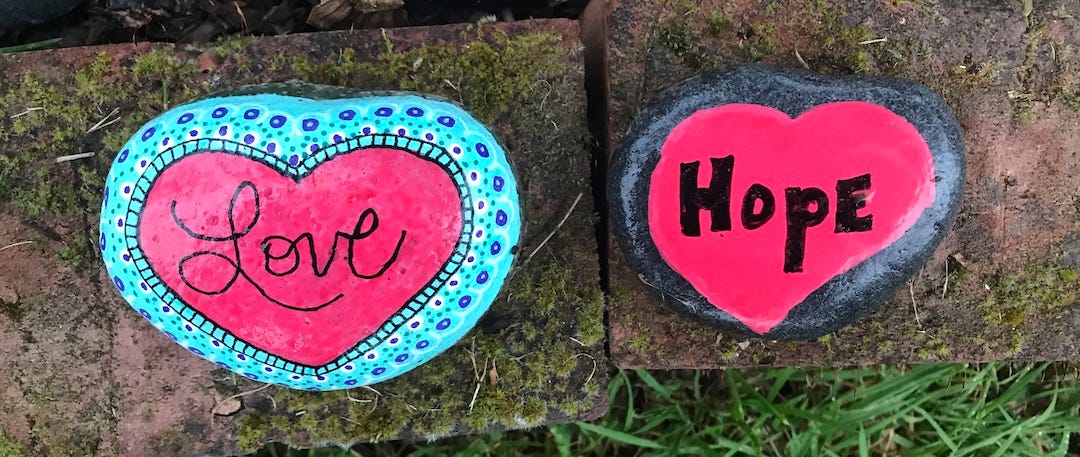To brighten the day
During the early lockdown stages of the Covid-19 pandemic, a sweet thing started happening in my neighborhood. Small painted stones showed up.
I found them on walks—or left on top of my mailbox. For a while they were everywhere. I imagined they were the result of at-home craft projects initiated by parents or caregivers trying to occupy kids. Some were clearly the work of small children, others showed a more sophisticated brush.
These stones made me smile. It felt like a sign of life in the neighborhood—a small voice saying: we can’t hang out together, but we’re here, we care, we’re trying to brighten the day.
I’ve kept two of these painted stones, to remind me of those times when we were all scared but trying to do good from a distance.
Also in those early pandemic months, I read (listened to, actually) Sebastian Junger’s book Tribe. It’s a slim book, but it made an impact.
Tribe is about community and how struggle and strife brings people together. Junger explains that modern society—across different cultures—is afflicted with some of the highest rates of depression, anxiety, chronic loneliness, and poor health. As affluence and urbanization increases, rates of depression and suicide go up as well.
Junger has spent time in war zones and looks at the impact of violence and loss. This sort of strife, which also includes natural disasters, brings people together.
Junger cites the work of Charles Fritz, who studied the effects of war and disaster on the general public: “…social bonds were reinforced during disasters,” he writes. “…people overwhelmingly devoted their energies toward the good of the community rather than just themselves.”
“…disasters thrust people back into a more ancient, organic way of relating…that allows individuals to experience an immensely reassuring connection to others…class differences are temporarily erased, income disparities become irrelevant, race is overlooked, and individuals are assessed simply by what they are willing to do for the group. It is a kind of fleeting social utopia.”
I remembered all of this recently, when I passed what I consider the motherlode of painted rocks outside a house I sometimes walk by. There are so many of them—and so well done. Some are the product of children’s brushes, but so many are skillful and stylish. I have no idea what the backstory is to these stones, but I like to think of them being made over many crafty evenings.
We’re here, we care, we’re trying to brighten the day.
I was so glad I read that book when I did, it changed my perspective. Reading about survivors of the Bosnian war who miss the community and purpose they found in those days, I started thinking about what I might miss from pandemic lockdown. It made me look for and appreciate all that I could.
I’m not trying to be annoying or overly silver-lining about it—sometimes hard times are just hard times. But sometimes they remind you of what is important. Sometimes they hold valuable lessons. Some day you may find yourself looking back on them with a sort of fondness, for those strange days when the world slowed down and people painted rocks in the hope of brightening up a stranger’s day.
I’m going to remember that, for whatever lies ahead.
I’m starting a series on my other Substack to help understand the US political events of these times (there’s a lot of historical background that isn’t taught, or not taught well). This summer I’m hosting a community listen of the award-winning podcast series on American democracy titled The Land That Never Has Been Yet (from the Duke Univ Center for Documentary Studies). Understanding historical context feels like the best first step, and doing it together provides company and support. I hope you’ll consider joining in.
• Project introduction
• Episode One: The Land That Never Has Been Yet
Something else to enjoy: my books












